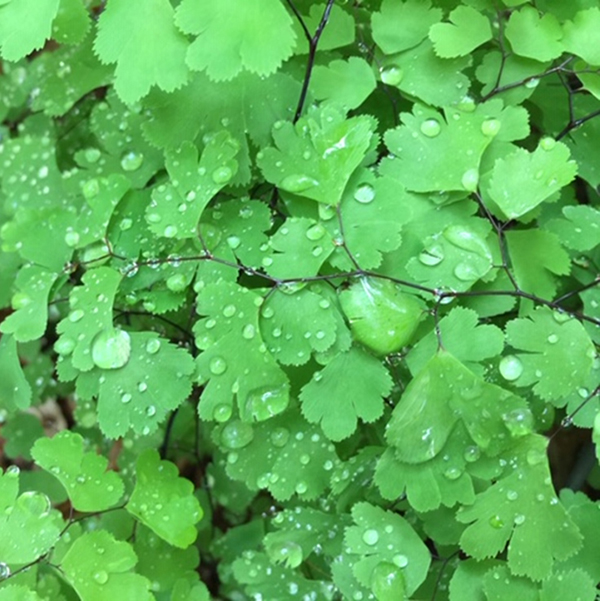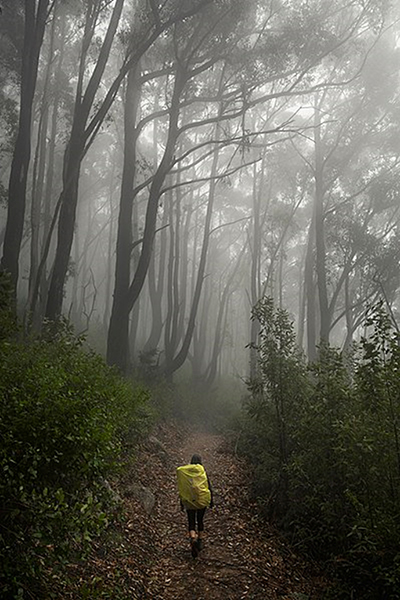
Pause for a moment and imagine the scent of rain. You can almost feel it in your nose.
There’s that bright, sweet smell on the wind before the rain comes. Then the scent of fresh earth and grass as the rain falls. And a damp, musty aroma like a forest floor that lingers afterward.
What gives rain these distinctive aromas? And why do we find them so memorable?
Well, the pre-rain smell is ozone. Lightning in the clouds splits nitrogen and oxygen gas into single atoms, which recombine into things like nitric acid and ozone.
Downdrafts and the first drops of rain carry ozone to the ground, where we experience it as a sweet, lightly acidic smell.
As the rain starts falling, drops of water strike plants and the ground and liberate organic compounds and aromatic oils, splashing them into the air as aerosols.
Once the soil and dead leaves on its surface become wet, bacteria begin to produce geosmin, an alcohol that’s the signature musty-basement smell of decaying plant matter.
Humans are incredibly sensitive to the smell of geosmin; we’re able to pick up just a few parts per trillion in the air.
And scientists think there’s a very good reason for this. Early humans depended on natural water sources. Those who could find water with their noses prospered. Those who couldn’t may not have survived to pass on their genes, and noses, to the next generation.
Background
Synopsis: After a dry spell, what can be more refreshing than the distinct aroma of a storm approaching? What causes the unique scented breezes that herald the arrival of life-giving rains?
- The first distinctive smell that arrives is likely to be from ozone.

Rain in a misty forest. Credit: Daniel Walker (CC BY-SA 3.0 [https://creativecommons.org/licenses/by-sa/3.0]), via Wikimedia Commons - Lightning splits nitrogen (N2) and oxygen (O2) into separate atoms that recombine into things like nitric oxide (NO) and sweet-smelling ozone (O3).
- Downdrafts from the thunderstorm carry the scent of ozone to our noses.
- As rain starts falling, it splashes organic compounds that have been collecting on dry surfaces into the air as aerosols.
- In the countryside, these fragrant compounds come from decaying organic material that becomes attached to rock surfaces during dry spells and recombines with elements from the rock to form fatty acids, oils, and alcohols.
- In the city, the compounds may smell differently because they come from different types of organic matter attached to concrete and asphalt.
- In 1964, Australian scientists named this combination of scents petrichor—a mixture of aromatic oils produced by plants and the organic compound geosmin.
- Plants secrete aromatic oils to suppress seed germination and early plant growth for their next generation, until the rainy season ensures their survival.
- In 2015, MIT scientists found that when raindrops hit soil surfaces, they pick up air and organic compounds such as geosmin on impact, then splatter and eject them as fizzy aerosols that travel downwind, carrying the familiar scent of rain.
- When a raindrop lands on a porous surface, it flattens out, while air bubbles from the pores and compounds from the soil are drawn into the droplet.
- These tiny bubbles, like those you see in soda, burst out of the splashing drops as aerosol clouds, wafting their petrichor scent into the air.
- The researchers found that slower raindrops produce more aerosols, and more porous soils produce more aerosols—so the petrichor scent is strongest after light rainfall on sandy soils.
- Geosmin is an alcohol produced when actinobacteria decompose organic matter into nutrients for use by other organisms.
- Geosmin is the scent we smell in damp soil and musty places. We also taste it in wine, beets, and some freshwater fish like carp and catfish. It breaks down in acid, so acidic marinades can be used to decrease the muddy flavor of the fish.
- Some desert plants use the scent of geosmin to attract pollinators, which associate it with water.
- During dry periods, actinobacteria decrease their activity and production of geosmin. But when the first humidity of an approaching storm moistens the ground, the pent-up actinobacteria work overtime producing the compound.
- Humans are particularly sensitive to geosmin and can detect just a few parts per trillion of it in the air. Some scientists believe that humans enjoy the scent of rain because early humans followed the rains for survival.

